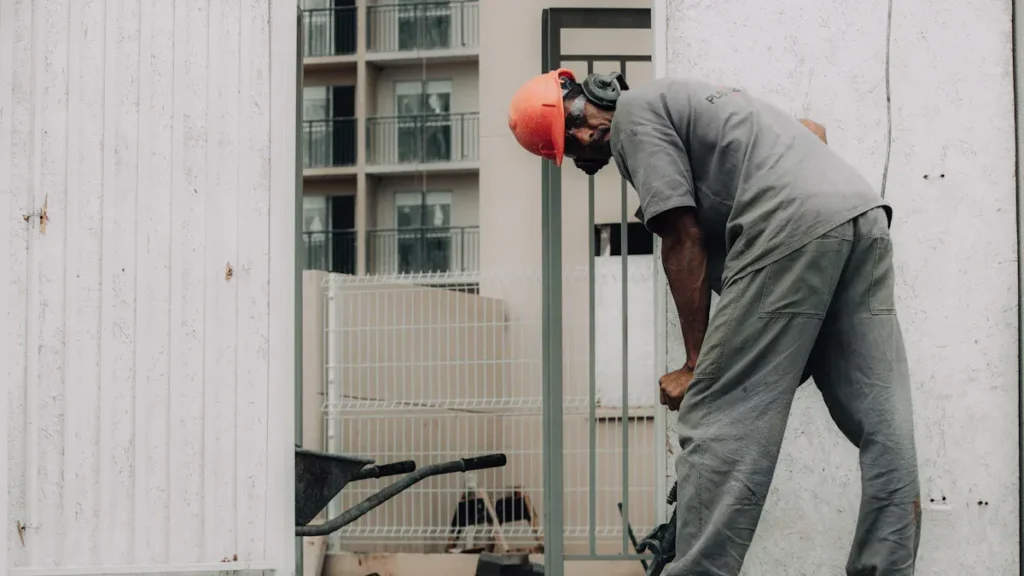
21 Mar How to Properly Pour Concrete Over Existing Concrete
Can you pour concrete on top of concrete? Yes, but it’s not as simple as it sounds. Without proper preparation, you risk issues like cracks, poor bonding, or even reduced durability. For example, raising the level of the concrete might block doors or misalign walkways. The condition of the old slab also plays a big role. If it’s uneven or deteriorating, the new layer may not last long. You must address these challenges to ensure success. By following the right steps, you can pour concrete on top of concrete and achieve a strong, durable surface.
Preparing the Existing Concrete Surface

Cleaning Old Concrete Surface
To ensure a strong bond between the new and existing concrete, you must start by thoroughly cleaning the old surface. Dirt, debris, and grease can prevent proper adhesion, so removing them is essential. Begin by using the following tools for effective cleaning:
- Pressure Washer: This tool is highly effective for removing grime and mildew from large areas. Use it to clean the surface deeply.
- Pump Sprayer: Apply cleaning solutions evenly with this tool for precise coverage.
- Grout Brushes and Scrub Pads: These are perfect for scrubbing tough stains, especially on textured surfaces.
- Buckets and Mixing Tools: Use these to dilute concentrated cleaners to the correct strength.
- Protective Gear: Always wear gloves and goggles when handling harsh cleaning products.
For grease stains, try the dishwasher detergent method for fresh stains or concentrated laundry detergent for older ones. If the stains persist, use trisodium phosphate (TSP) or enzymatic cleaners for stubborn grease.
Repairing Cracks and Damage
Before adding the top layer, inspect the existing concrete for cracks or damage. Fill large cracks or holes with a suitable patching compound. The table below highlights common materials for repairing cracks:
| Material Type | Product Examples | Suitable Crack Size |
|---|---|---|
| Polyurethane-based | Sakrete Non-Sag Sealant, Sakrete Self-Leveling Sealant | Up to ½” deep and wide |
| Latex-based | Sakrete Crack Filler, Sakrete Concrete Repair | Up to 3/8” deep and 1/2″ wide |
After patching, ensure the surface is level and stable. Clean the area of debris, calibrate any machinery used for leveling, and account for seasonal variations that may affect the curing process.
Setting Up the Perimeter
Defining the area for adding the top layer is the next step. Use forms to create a clear boundary. These forms should be securely fastened to prevent leaks during the pouring process. Double-check that the forms are level and aligned properly. This step ensures the new concrete layer will have clean edges and a uniform thickness.
Ensuring Proper Bonding
Applying a Bonding Agent
To ensure the new concrete adheres securely to the existing concrete, you need to use a bonding adhesive or primer. This step is crucial for creating a strong connection between the two layers. Bonding agents work in two ways:
- Mechanical Bonding: Applying a scratch coat fills gaps and creates a rough surface, improving adhesion.
- Chemical Bonding: A liquid bonding adhesive enhances the bond strength, especially when using polymer-based products.
Follow these steps for the best results:
- Clear the Surface: Remove loose debris and chips from the area.
- Prepare the Adhesive: Shake the bonding adhesive and dilute it with water if using it as a primer.
- Prime the Surface: Apply the diluted adhesive to cracks and allow it to dry.
- Apply Full Strength Adhesive: Once the primer dries, apply the bonding adhesive directly to the surface.
- Pour New Concrete: Add the new concrete layer while the adhesive is still tacky.
This process ensures the new layer bonds effectively, reducing the risk of cracks or separation. Avoid skipping this step, as poor bonding can compromise the durability of your project.
Roughening the Existing Concrete
Roughening the surface of the existing concrete is another essential step for proper bonding. A smooth surface can prevent the new layer from adhering well. Use tools like scarifiers or scabblers to create a textured surface.
- Scarifiers: These machines, also called concrete planers, use multi-tipped cutting wheels to remove the top layer of concrete quickly.
- Scabblers: These tools chip away at the surface using a pummeling action, making them ideal for surface preparation.
When roughening the surface, avoid wetting it immediately before applying the bonding adhesive. Excess moisture can interfere with adhesion, reducing the effectiveness of the bonding agent. By properly preparing the surface, you create the ideal conditions for a durable and long-lasting concrete layer.
Pouring and Leveling the New Concrete

Mixing the Concrete
Proper mixing is essential to ensure the strength and durability of the new layer. Use the correct water-to-concrete ratio as specified on the product packaging. Too much water weakens the mix, while too little makes it difficult to work with. Combine the materials in a clean mixing container or a concrete mixer. Stir thoroughly to eliminate lumps and achieve a uniform consistency.
Tip: Improper mixing can lead to serious issues:
- Cracks may form, allowing water and dirt to seep in, which can weaken the slab.
- Uneven patches can grow over time, requiring costly repairs.
- Environmental factors like wind or heat can cause the surface to dry too quickly, leading to fractures.
Take your time during this step to avoid these problems and ensure a strong foundation.
Pouring Concrete Over Existing Concrete
When you pour concrete over existing concrete, start at one end of the area and work your way across. This method ensures even coverage and prevents gaps. Use a shovel or rake to spread the concrete evenly. Make sure the layer is thick enough to provide durability but not so thick that it adds unnecessary weight to the structure.
Note: Spreading the concrete evenly is crucial for achieving a smooth and level surface. Uneven distribution can lead to weak spots and cracks over time.
Leveling and Smoothing
Leveling the surface is a critical step in the pouring of concrete. Use a screed board to remove excess material and create a flat surface. Follow these best practices for effective screeding:
- Ensure the forms are properly installed to act as guides.
- Use a straight screed board and check its edges for accuracy.
- Pull the screed gently to maintain the level of the concrete.
- Start pulling from the last section you leveled to avoid disturbing finished areas.
- Spread the concrete generously to ensure proper leveling.
After leveling, smooth the surface with a trowel. For smaller areas, use a finishing trowel at a 45° angle, applying long, straight strokes. For larger slabs, consider using a power trowel. Walk-behind power trowels are ideal for medium-sized projects, while ride-on models work best for extensive areas.
Pro Tip: A smooth finish not only enhances the appearance but also improves the durability of the concrete by reducing the risk of water infiltration.
By following these steps, you can add concrete to your existing slab effectively, ensuring a strong and long-lasting result.
Curing the Concrete
Allowing Proper Curing Time
Curing is a critical step that ensures your concrete achieves its maximum strength and durability. You need to keep the surface moist for at least seven days to allow the hydration process to continue. This step prevents the concrete from drying too quickly, which can lead to cracks and reduced strength. There are several effective methods to maintain moisture during curing:
- Fogging: Use a fogging machine to create a fine mist over the surface. This increases humidity and reduces evaporation.
- Natural coverings: Place burlap or straw over the concrete and keep it damp.
- Plastic sheeting: Cover the surface with polyethylene sheeting to trap moisture.
- Spraying with water: Hose down the surface frequently to keep it hydrated.
- Pond curing: Build berms around the slab and flood the area with water to maintain consistent moisture levels.
Avoid heavy traffic on the concrete during the curing process. Footsteps or equipment can damage the surface and compromise its integrity. By taking these precautions, you ensure the concrete cures evenly and develops the strength it needs.
Using Curing Compounds
Curing compounds offer a convenient way to retain moisture in the concrete. These products form a protective film over the surface, preventing water from evaporating too quickly. When applying a curing compound, follow the manufacturer’s instructions carefully to achieve the best results.
Here are some advantages of using curing compounds:
- They help the concrete retain moisture, allowing it to gain strength over time.
- They delay shrinkage, reducing the risk of cracks.
- They enhance the concrete’s overall durability and wear resistance.
For optimal results, apply the curing compound immediately after finishing the surface. This step ensures the concrete remains hydrated and cures properly, resulting in a strong and long-lasting slab.
Disadvantages of Pouring Concrete Over Existing Concrete
Raised Surface Levels
Adding a new layer of concrete increases the height of the surface, which can lead to several challenges:
- Door thresholds may no longer clear the raised surface.
- Misalignment with nearby structures, such as driveways or steps, can occur.
- The risk of cracking increases if the underlying surface has unresolved issues.
You might need to adjust surrounding structures to accommodate the raised level. For example, you may have to trim doors or modify drainage systems to prevent water pooling. These adjustments can add time and cost to your project.
Potential for Reduced Durability
The durability of the new concrete layer depends heavily on its bond with the existing surface. If the bond is weak, the new layer may crack or separate over time. The condition of the existing slab plays a crucial role in this process. A deteriorated or unstable base can compromise the longevity of the new layer, even if you follow all other steps correctly.
To minimize this risk, ensure the old surface is clean, level, and free of major damage before pouring the new layer. Proper preparation and bonding techniques are essential for a durable result.
Added Weight
A new layer of concrete adds significant weight to the existing structure. This additional load can stress the foundation, especially if it wasn’t designed to support extra weight. In some cases, this may lead to structural issues, such as sagging or cracking.
You should evaluate whether the foundation can handle the added weight before proceeding. If the structure is already under strain, pouring a new layer may not be the best solution. Consulting a professional can help you determine the safest approach for your project.
Pouring concrete over existing concrete can be a practical solution when done correctly. Proper preparation, bonding, and curing are essential for achieving a durable and long-lasting result. Start by cleaning and repairing the old surface, then apply a bonding agent to ensure a strong connection. Finally, pour and cure the new layer carefully.
Safety Tip: Always wear protective gear, such as gloves and safety glasses, and keep the work area clear of obstructions. Ensure equipment is in good condition to avoid accidents.
Avoid common mistakes like using overly wet or dry concrete, pouring too thin, or troweling at the wrong time. If you’re unsure about any step, consulting a professional can save time and prevent costly errors. By following these steps, you can create a strong, reliable surface while minimizing potential drawbacks like raised levels or added weight.


